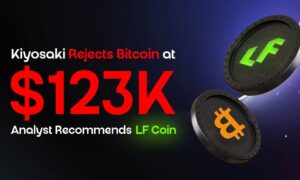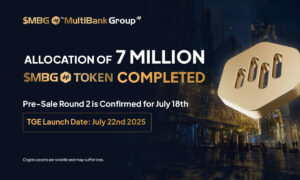Regardless of your familiarity with the art and investment sectors, you’ve probably heard about nfts (Non-Fungible Tokens). Although many people are unaware of them, they are an intriguing component of both the fintech and art industries.
While some think they’re the next step in artistic development, others remain dubious. The facts, however, cannot be disputed:
Billions of dollars have already been paid (or swapped for art nfts via cryptocurrency). Digital artist Beeple, for instance, sold an NFT in 2021 for $69 million at the famed Christie’s auction house.
Find out what nfts are, who creates them, and how you can start producing or gathering them yourself by reading on them.
An NFT is exactly what?
NFT stands for “non-fungible token,” although it might be important to elaborate for those who are hearing it for the first time. If a resource or piece of money is fungible, it can be traded for something else with a comparable value.
As a result, the dollar is fungible because if you and a friend exchange one-dollar bills, you both still have one.
Even cryptocurrencies are fungible in the sense that the value remains the same when trading one bitcoin unit for another at the same moment. Non-fungible refers to something that is distinct and uncopyable.
Therefore a non-replicable deed stating ownership of anything is a non-fungible token. The “something” in this case is a piece of digital art.
The popularity of crypto art nfts is influenced by how simple it is to copy digital files. For instance, it is impossible for someone to possess a video in a way that prevents others from having equal access to it.
Anyone with access to the internet can quickly download and copy shared videos. Nonetheless, the notion of art ownership varies significantly depending on the context. Think about how challenging it is to produce a painting versus how straightforward it is to download a computer image. Instead of using distinctive brushstrokes, a piece of digital art is created from a singular collection of ones and zeros.
The ownership conundrum around digital art is resolved by nfts. These “tokens” are actually ownership declarations for a piece of digital art.
The provisions of the NFT govern the owner’s rights. The owner of an NFT could be able to control how a file is used or reproduced, for instance.
Since nfts are decentralized and live on the blockchain, especially the Ethereum blockchain, they are extremely secure and have distinctive identification numbers. Although it is technically conceivable to produce numerous nfts for the same picture, tune, or video, this rarely happens.
It is important to understand that if nfts assign ownership of an artwork, this does not prevent other individuals from accessing the artwork. For instance, you may be able to claim ownership of a Beeple digital collage if you spend $69 million on it as opposed to just having exclusive access to it.
The digital file for the collage is available for anyone to view, print, or screenshot. Yet, you are the only person with the unique NFT claiming ownership. This implies that you own the digital work if it ever brings in money (for example, from commercial use or value).
Additionally, as nfts are securely stored on the blockchain, a transparent record of ownership exists, confirming your claim to any potential revenues from the sale of the NFT should you decide to do so.
What is blockchain, exactly?
If you’ve heard of cryptocurrencies like Bitcoin, then you’ve probably heard about blockchain (a sort of cryptocurrency). Blockchain is a decentralized, distributed, and encrypted record-keeping system. It stores information in “blocks,” which are shared by computer network nodes.
When a block’s storage capacity is reached, it shuts down and is connected to the block before it. Each block has a maximum amount of data it can hold. After that, a new block shows up to capture the subsequent data set. The chain is created as a result of this.
The fact that blockchain is utilized by a variety of different computer systems and that blockchain records are simultaneously uploaded (or distributed) to all of them is a key component of the technology.
This means that all machines carrying a blockchain must be simultaneously hacked and modified in order to successfully change the contents of a blockchain. This degree of online security is said to be nearly unrivaled.
Nfts can be stored on blockchains together with a variety of other data and records. Because they are often used as a transaction record, the blockchain is a prerequisite for bitcoin.
Blockchain can be used by individuals to exchange money, assets, works of art, and contracts without the need for a middleman like a bank, government body, or business. This suggests that without the help of a social media algorithm, content creators and artists can interact with and make sales to their audience directly.
The NFT sector
Similar to the fine art market, the NFT industry is speculative. This indicates that those who bid millions of dollars for the right to use a digital image or video do so with the expectation of later selling it for a profit. The NFT market is merely a digitization of the historical interdependence between the worlds of money and art.
The development and diversification of the art market have also been heralded by the rise of nfts. The Beeple sale at Christie’s was a turning point for the NFT market and the art world, allowing a wider range of artists to develop and sell their work on international platforms. Many well-known artists, including Damien Hirst and Tom Sachs, have formed their own NFT collections, despite the fact that some art collectors and artists are leery of nfts.
Methods for an NFT
Minting is the process of producing an NFT. This method is used by artists and content producers to turn digital files into blockchain assets. These files are then saved on a blockchain ledger and encrypted. Once it has been coined, an NFT can be purchased, traded, or swapped. Most NFT suppliers list their prices in cryptocurrencies.
The platform chosen to construct an NFT will dictate the specifics of the minting process. In general, a cryptocurrency wallet must be set up using a platform like metamask, and cryptocurrency (most likely Ethereum) must be purchased.
The chosen NFT platform will then be connected to the crypto wallet, enabling the creation and upload of nfts. Recognize that many NFT websites impose fees, so do your research beforehand.
How to Advertise an NFT
Once you’ve created an account with your NFT platform, set up your digital wallet, and paid your fees, you’re prepared to sell. Anyone with the right sales technique can purchase or place a bid on the NFT after it has been advertised. Some decide to sell at auctions, while others market nfts in the same way they would an Etsy listing for a handmade mug.
Naturally, finding an audience is essential to boosting the number of people interested in an NFT. Many producers and artists interact with a fan base on social media to raise interest in their work. Similar to the traditional art market, the prices of nfts are typically impacted by a mix of social media buzz and reputation.
It is also crucial to assess which communication methods will be most effective in reaching potential purchasers of an NFT. Examples include Instagram, Reddit, Discord, and Telegram.
It’s crucial to maintain a steady stream of contact with the audience, whether through posting, hosting live streaming, or even participating in amas (Ask Me Anything). This technique may be labor- and time-intensive, but it effectively increases demand and brand recognition.
The development of a workable exchange for digital art, which was previously difficult to buy and sell in the traditional art market, is one of the most important blockchain benefits, even though it was first unanticipated.
Although if traditional galleries and critics did not warmly embrace content creators who gained renown through social media, it has nevertheless become a source of income for them.
How to Acquire and Compile nfts
You need to have a digital wallet connected to an NFT platform before you can start selling nfts. To buy them, you also need to have one. You will probably need a digital wallet that supports Ethereum because it is the blockchain and cryptocurrency that most nfts run on.
Of course, in order to purchase your nfts, you must have Ethereum in your wallet.
Remind yourself that there are fees associated with both buying and selling nfts, in addition to gas costs. The price is often between $5 and $50. (note: is the Ethereum symbol).
Treat your first NFT purchase like any other shopping trip, and start by investigating. To gain a feel of what’s available, spend some time perusing marketplaces like opensea, Foundation, and superrare while paying attention to what you find appealing.
You can use the cryptocurrency in your crypto wallet to buy anything you like that is within your price range.
Similar to learning about the market before buying stocks, you should do your research before investing in nfts as a financial investment. Spend time learning about recent NFT auctions, the key participants, and the most valuable musicians and fashion movements.



































